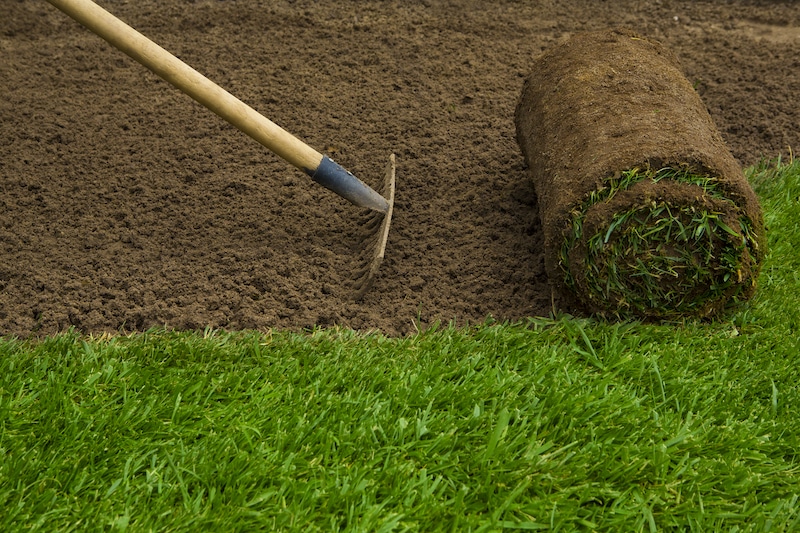
When you want a lush green lawn and you want it fast, sod is your answer. But giving your new lawn the best chance of success starts with the ground being properly prepared. Here is some advice on prepping your area for sod installation.
Your soil may be missing some essential nutrients. Soil Testing will let you know what the soil needs to be fully prepared for the sod installation.
Laying sod over large objects will not only make the lawn look uneven, but it may also interfere with proper growth. To prevent this, take the time to go over the area and remove any rocks, branches, or other debris that you can find before your sod installation.
You won’t want to deal with weeds once your new sod is in place, so the best time to do something about them is before the installation. Use a nonselective vegetation killer to eliminate all vegetation in the area you plan to sod. Depending on the herbicide you use, you may need more than one application, so do your first application one month before laying the new sod. Also, be sure to keep your distance from garden beds and shrubs as the herbicide will not discriminate between plants.
With a rake or shovel, break any peaks in the soil and spread them around to make the area even with the surrounding soil. If there are any dips in the soil, fill them in to help prevent an uneven appearance once the sod is installed, and to avoid areas of water build-up. Make sure that the ground slopes away from buildings so that water will drain away from them.
Topsoil makes your soil healthier and this, in turn, helps to establish the sod. Adding 6 inches of regular topsoil will work, or alternately, you may use manure or compost.
When you get the results of the soil testing, you will have an idea of which amendments your soil needs. Lime, for example, can increase soil pH, sulfur will lower it, and gypsum will flush out salts.
Tilling the top 4 inches of the soil helps mix the topsoil and amendments while also loosening the soil, making it easier for the sod’s roots to establish themselves. Do one or two passes only, to avoid damaging the structure of the soil.
Fine grading packs and smooths the soil. As with tilling, don’t overdo it. If the soil is packed too much, the sod’s roots will have difficulty attaching properly.
Sod won’t attach properly to dry soil, so be sure to water the area before sod installation. The soil should be damp, but not actively wet. If it becomes muddy, give it a chance to dry slightly before laying the sod.
Installing sod can give you a beautiful lawn in what seems like no time at all and prepping the area in advance helps ensure that it will establish well and grow to be thick and healthy.
If you need sod, contact Western Turf Farms. If you need a team to install your sod, contact Sod Crew.
Order fresh sod now or request a custom quote for your project.
Save with a Yearly membership. Custom fertilizer program. Fertilizer, topsoil, seed delivered to your door before you need it. Don’t forget, we will remember for you!
Western Turf Farms Abbotsford
39183 No.5 Road Abbotsford, BC V3G 2G3
Western Turf Farms Langley
7880 240 Street Langley, BC V1M 3P9
© Copyright 2025, all rights reserved by Western Turf Farms. By using our website you agree to our Disclaimer and Privacy Policy.